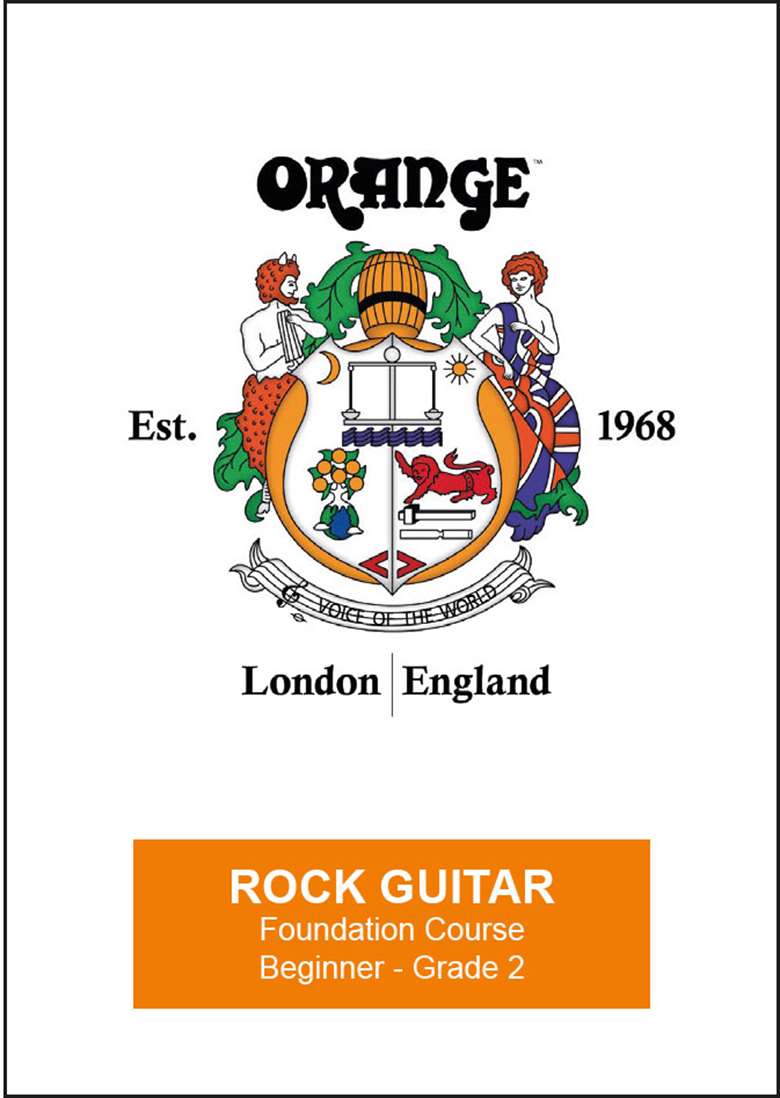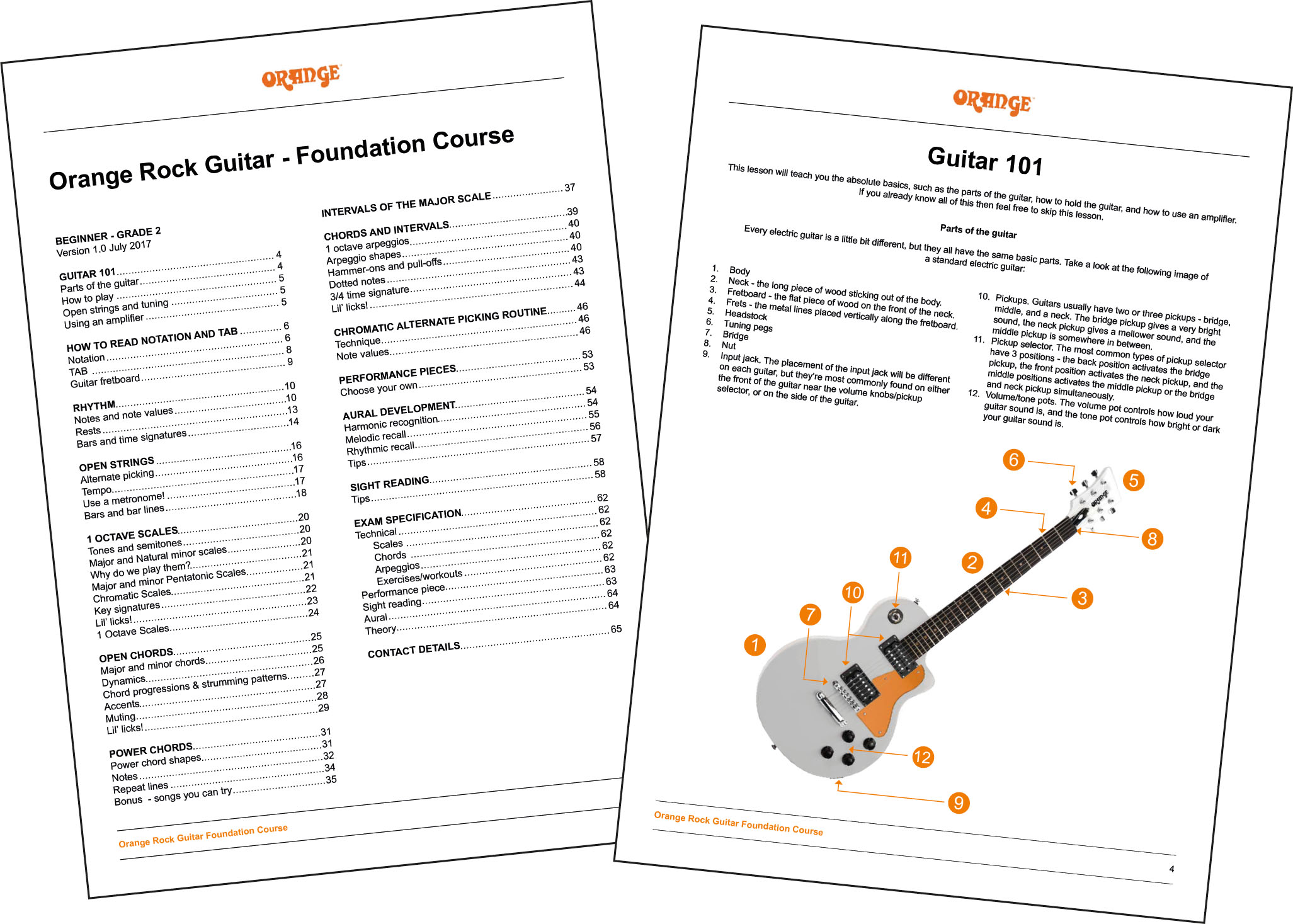Resource Reviews: Orange Amps learning materials
Al Summers
Friday, March 1, 2019
Al Summers follows up on last year's look at Orange Amps’ move into examinations with a deep dive into its accompanying teaching resources

Orange is one of the UK's most recognizable amplifier manufacturers, having been established in 1968, which was quite an iconic year for rock music. It saw releases from the likes of Creedence Clearwater Revival, the Rolling Stones, the Beatles, Jimi Hendrix, Steppenwolf, Cream, Fleetwood Mac and Simon and Garfunkel that all summed up the era in different ways, while early releases from Pink Floyd, Soft Machine and Frank Zappa looked forward. All used amplification, visibly as well as audibly, and most remain on pupils’ wish lists of artists whose music they want to learn today.
In the late 1990s, Orange amplifiers made something of a comeback (after a quieter time affecting many electric guitar-related companies) and are now once again famous throughout the world, producing the most instantly recognizable stage amplifiers.
This is not the first mention in MT of the brand's recent and significant entry into the world of music education. The May issue of last year gave the developer's perspective of its Online Music Exams (OME), and five months later I offered an overview of the venture, along with some thoughts about the future.
What is perhaps surprising is that similar companies have not done this before. For example, Fender's considerable investment in education – leading to the influential publications Essential Elements and, most recently, Fender Play – has not produced an exam syllabus.
As my previous piece viewed the syllabus only, I will also explore in more detail the copious and comprehensive teaching materials, making recommendations about who may benefit via brief case studies.
Exam materials
The syllabus itself holds few surprises, containing familiar elements. Pass marks may seem low or generous but this is justified in some ways by the rigorousness of the verifying of the candidates’ knowledge – every detail of every section is tested. What may seem to some a new idea is actually a very useful old-fashioned way of placing the exams in distinct levels. The terms here are: foundation; intermediate; advanced. This gives some clarity not only to the learner's progress but also to a level of expectation. The innovative approach here is that the three parts/exams of each nominated group are effectively examined together.
Careful planning, evident research and some painstaking work meant that this syllabus was many years in the making so, when launched, it appeared extremely well thought-out, already addressing and resolving many of the fears and queries some tutors had about the more novel aspects of this suite of examinations. Some early typos in the material were quickly corrected: one advantage of online rather than printed book material.
In summary, the syllabus content will hardly surprise teachers. It is thorough and pragmatic, retaining most of the general order of presentation that we have come to expect. As an aside, why exam boards do not put aural tests at the start of each exam (and award more marks for this aspect) is beyond me!
We therefore encounter scales, chords, arpeggios, exercises and studies (here called ‘workouts’). Using a set of parameters as a guide, a performance piece is chosen by the candidate. Sight-reading is a welcome section that some other rock boards relegate to an option or leave out altogether (often causing serious students to struggle with this once they arrive at a college). Ear tests explore harmony, melody and intervals with an element of realistic memory testing. Theory knowledge is also assessed (by multiple choice). Improvisation is introduced at the intermediate level, continuing into the advanced section.
Course materials
To briefly summarize the materials, there are many scales, including modal and more advanced scales in prescribed patterns (as ever, clef readers have the advantageous option to reposition anywhere they wish of course). Inventive ‘lil’ lick’ sections provide short examples of how to use some of the ideas in a sort of formalized improvisation context. References are made to songs and pieces (mostly from well-known bands and artists) so that the learner can listen to examples of the materials in a real situation.
Parts of the guitar, gear and specialist techniques all feature, as do dynamics and some comprehension of harmonic progressions. Notation is in treble clef and tablature with some fretboard diagrams, the latter usually for moveable (called ‘shiftable’ here) patterns – one place where the encouragement of true musicianship falls down perhaps. Barré chords, which are usually termed ‘barre’ now, are described as ‘bar’, just as bare fifth chords are given their usual rock term ‘power’ chords. It is a rock syllabus, however, so there's no need to know that the term often implies a completely different chord when listening to a guitarist such as Danny Gatton.

The resources are easy to navigate thanks to a clear contents page, with the materials being nicely laid out for ease of clarity and consumption
Syncopation, 5/4 time, triplets and the reading of rhythm charts all feature and a handy rubric gives tutors insight into subject detail.
In practice
Over the last year, several of my students and colleagues have used this syllabus. One student has been using the materials to support lessons and learning while another has become an ex-student, ceasing lessons (other than attending workshop classes) because the material offers so much study matter, although this has slowed down the learning process itself. Positive comments have included that materials are comprehensive and structured as well as free.
One student gave up using the materials feeling completely overwhelmed by them and preferring the steady progress afforded by personally-tailored one-to-one education. A young student found the self-learning very difficult, while some older students – particularly the more self-motivated – like the idea of reading a manual and having tables and other reference resources. Many remain neutral, raiding the resources for ideas where appropriate without feeling the need to follow the syllabus or take exams.
A tutor colleague has been using the materials for lesson planning and structure as well as creative ideas, perhaps the greatest bonus for teachers. The clarity and coverage allows for easy lesson planning, quick reference to support materials and an assurance that good progress can be made without skipping important topics. This has a distinct advantage over online learning programmes such as Fender Play for example, which feels more hobby-based, suited perhaps to someone who is learning with few aspirations and content to hop from one aspect to another, whether connected or not. There are plenty of learners who will extract hours of pleasure from this approach; as tutors, we are unlikely to meet them – unless they become lost or ambitious enough to book lessons, where a syllabus like this can provide structure and fill all those gaps.

